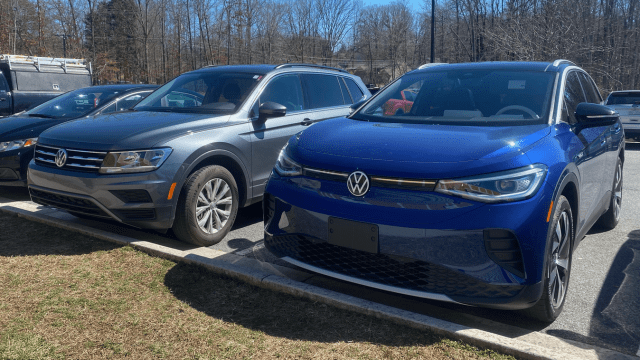VW’s ID models had a rocky start getting into dealerships, but everyone sort of half-hoped that once sales were up and running, the mainstream rivals to Tesla would take off. That’s only come half true.
The big news this week is VW has declared its sales offensive in China a failure. This is a real problem as China is the biggest EV market in the world at the moment, and the largest car market overall, as well. The buying public over there, however, don’t seem particularly interested in VW’s rather bland, staid EVs, as the Financial Times reports:
Sales of new electric models, such as the ID. 4, have been slow, with VW delivering just 18,285 battery-electric vehicles in the first half of 2021.
“VW has had more than 70,000 ID. 4 test drives [in China], but only converted a few thousand of these into sales,” said Arndt Ellinghorst, an analyst at Bernstein.
I wondered if maybe VW’s ID sales were just depressed in China, so I looked up what we’ve been buying here in the States. Well, they haven’t been great, as Reuters reported at the start of July:
The German-built ID.4 hit U.S. dealers earlier this year and sold 5,756 units in the first half, with 85% of trade-ins coming from owners of non-electric vehicles.
VW at least said it’s the brand’s most profitable vehicle. That’s something!
I did find a few headlines saying that sales were strong for the ID models in Europe, so I went and pulled up VW’s global sales figures. On July 20, VW issued this rosy report:
.In total, 170,939 BEV models were delivered throughout the world up to the end of June, more than twice as many as in the prior-year period (+165.2 per cent).
The problem is that this includes all VW Group EV sales. Audi e-trons, Porsche Taycans, various Skodas — they all get lumped in. VW’s ID sales are more restrained: 37,292 units for the ID.4, 31,177 units for the ID.3. What’s more, the vast majority of EV sales across VW are in its home country of Germany, where everyone and their dog drives a VW:
As regards BEV deliveries by regions, the Group’s home market of Europe was clearly in the lead in the first half year, with 128,078 vehicles (share: 74.9 per cent). Here, the Group was the market leader, with a share of about 26 per cent in BEV deliveries. In the USA, the Group handed over 18,514 BEV models to customers, corresponding to 10.8 per cent of its worldwide BEV deliveries. Thus, the Group achieved a higher market share there with BEV, at about 9 per cent, than in the overall market including conventionally powered vehicles. In China, 18,285 battery-electric vehicles were handed over to customers in the first half of 2021, accounting for 10.7 per cent of the Group’s worldwide BEV deliveries.
This is all to say, just about the only people buying these German EVs are Germans.
Curious again, I wondered how these 68,469 ID.3s and .4s compared to their closest rivals, the Tesla Model 3 and Y. It turns out Tesla delivered 199,360 3/Ys worldwide in Q2 alone, 382,140 for this year altogether when you add in the 182,780 delivered in Q1. It’s not entirely fair to say VW’s wonderfully-engineered ID models are a flop, but let’s say I’m sure VW execs are as eagerly awaiting the more interesting ID.Buzz microbus versions as much as anyone else.
